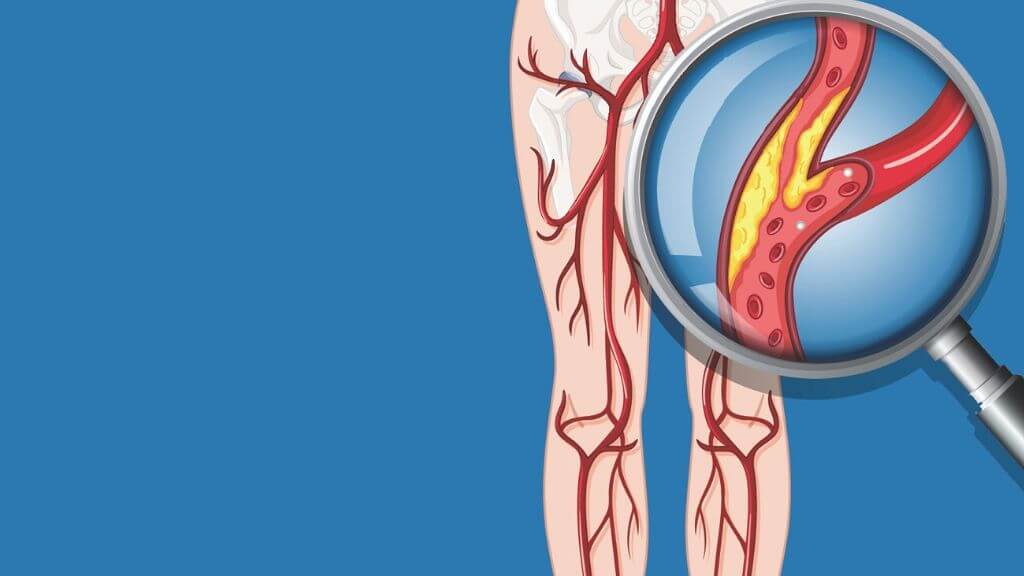Pain can occur in your leg for any number of reasons, most commonly as the result of muscle strain or injury. Leg pain can range between mild and severe, and in most cases will disappear within a short amount of time with the help of home remedies and rest.
Sometimes, a more serious medical condition could be causing your leg pain, and this cannot be ignored. When leg pain is persistent or gets worse instead of better, there is a need for prompt medical attention.
Causes of Leg Pain
The causes of leg pain can vary from cramp or injury to medical conditions such as neuropathy. The most common causes of minor leg pain include:
♦ Cramps: Cramps trigger sudden pain in the leg as the muscles sharply contract. The tight muscles form a visible and hard lump that is tender to the touch. Fatigue and dehydration can cause cramps, and home remedies are effective at relieving cramp pain.
♦ Injuries: Common leg injuries include muscle strains and inflammation, as muscle fibers get overstretched or torn as a result of physical activity. Tendinitis is also common, which is when the tendons in your leg become inflamed and difficult to move. Stress fractures in the leg bones can also cause pain.
♦ Atherosclerosis: This condition causes arteries to harden as a result of cholesterol buildup. The blocked arteries prevent blood flow to the legs, which results in frequent pain, particularly in the calves.
♦ Arthritis: Inflamed joints prevent mobility and cause pain and swelling through the leg around the affected joints.
♦ Blood clots: Blood clots caused by medications or blood vessel damage can cause pain and swelling in the legs. Varicose veins are also common with blood clots, and these are a result of restricted circulation.

Conditions Associated With Leg Pain
In addition to common causes of leg pain, there are several medical conditions that are also associated with leg pain. Leg pain can be a sign of heart problems, as it is a strong indicator of circulation problems. Poor circulation can be identified through:
♦ Swollen feet and ankles
♦ Skin being pale in appearance
♦ Coldness in the feet
♦ Leg pain
♦ Leg numbness
♦ Frequent cramping after movement
More serious conditions associated with leg pain include:
Cardiovascular Diseases
The heart is responsible for circulating blood to the rest of your body, and any interference with this can cause serious problems. Leg pain can be one of the first signs of heart disease, heart attack, or even stroke.
High cholesterol, high blood pressure, and blood vessel inflammation are all associated with poor heart health, which increases your risk of these conditions. Swollen and painful legs can also be linked to heart failure. Heart failure causes chronic leg pain, as it makes it harder for your kidneys to remove extra water resulting in swollen feet and ankles.
Peripheral Artery Disease
This condition develops as a result of blocked arteries, usually from fatty deposits called plaques. Extremities are the parts most often affected by the blocked circulation, and pain and swelling are common symptoms of the disease.

This condition requires treatment because blood flow is not only reduced to the legs but also the brain and the heart, increasing the risk of serious health issues such as stroke and heart attack.
Neuropathy
This is another condition associated with persistent leg pain, and it requires medical attention. The pain experienced is a shooting, burning sensation, and is often combined with numbness in the affected limb.
Neuropathic pain is caused by pain or injury as nerves supplying the limb no longer function properly. Neuropathy is a chronic condition that worsens over time, and it is associated with diseases such as diabetes, arthritis of the spine, thyroid problems, and nutrient deficiencies.
Treatment for Leg Pain
Treatment for leg pain will depend on the cause. When the cause of your leg pain is a minor injury or muscle cramp, you can treat the pain at home. Effective pain-relieving methods to try at home include:
♦ Resting and elevating your leg
♦ Over-the-counter pain medications
♦ Wearing compression stockings
♦ Applying ice on the affected area a few times each day
♦ Taking a warm bath
♦ Gently stretching the affected leg muscles

When the cause of your leg pain is related to heart health, it may be necessary to start taking cholesterol or blood pressure medications to help restore healthy circulation. It is also necessary to follow a heart-healthy diet and lifestyle to prevent heart problems and treat leg pain.
♦ A diet full of healthy fats, fresh fruits and vegetables, lean proteins, and omega-3 fatty acids
♦ Reduced intake of processed foods and fried foods
♦ Increased fiber intake
♦ Reduced sodium, sugar, and cholesterol intake
♦ Regular physical activity
♦ Relaxation techniques like yoga and meditation
♦ Weight loss and maintaining a healthy weight
Natural Treatment for Leg Pain
You can incorporate natural ingredients into your diet to help treat leg pain. Depending on the cause of your leg pain, these beneficial ingredients can help.
Cardiovascular diseases:
♦ Atherosclerosis is a condition marked by high cholesterol and plaque formation in the arteries. Berberine extract and pine bark extract can both treat blocked arteries and the leg pain that can be caused. Both of these ingredients work to reduce overall cholesterol levels in the blood, thus protecting the heart.
♦ Peripheral artery disease is also caused by blocked arteries as a result of plaques forming in the arteries. Capsicum extract lowers cholesterol and blocks the activity of a gene that causes artery contraction. This stimulates better blood flow and can reduce leg pain caused by blocked arteries.
Diabetes
♦ Neuropathy is a common condition associated with diabetes. Elevated blood sugar levels can damage the nerves, causing leg pain. Red yeast rice and chromium are both natural ingredients that can regulate blood sugar levels to help control diabetes and reduce neuropathy pain.
When to See Your Doctor
If the cause of your leg pain is obvious, such as a recent injury, then you can try home remedies to relieve pain or see your doctor. If you notice leg pain along with any of the following symptoms, then you need to seek immediate medical attention.
♦ Inability to walk or put pressure on the leg
♦ The leg is pale or cool to touch
♦ Difficulty breathing
♦ High fever
♦ Leg is warm to touch
♦ Leg is swollen
What Is the Long-Term Outlook?
Injuries to your leg muscles can be prevented with lifestyle changes, and this can reduce leg pain and discomfort. Getting regular exercise, stretching daily, and following a balanced diet can help to prevent muscle and bone injuries commonly known to cause leg pain.
If there is an underlying medical condition causing your leg pain, the pain will be persistent despite home remedies, and you need to seek treatment. With the right treatment, your leg pain can be reduced, and you can continue your life in comfort.






